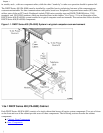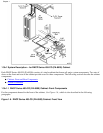
Chapter 1
Preparing to Install the System
This chapter contains important information to read before proceeding with the installation, such as a system description
and vital safety considerations. This chapter is divided into the following sections.
Safety Considerations ●
Required Tools ●
System Description ●
1.1 Safety Considerations
Before installing the system, be sure to take the following important precautions.
To ensure a safe and effective installation, follow the procedures exactly as they are
written in this manual
Do not attempt to install the system without the assistance of another able-bodied person. The size and weight of
the system do not allow it to be safely installed by one person.
●
The information in this manual assumes that the system site has been prepared, and the system unpacked,
according to the instructions in the DNCP Series 400/400-CO (PA-8500): Site Planning Guide (R454) and the
DNCP Series 400/400-CO: Unpacking Instructions. Refer to these manuals before proceeding with the installation.
●
Observe all applicable industry safety standards.●
Provide the necessary space and light to safely perform the installation.●
Do not wear conducting objects, such as rings, bracelets, and keys.●
Before installing the system, familiarize yourself with the system hardware and how to get help during the
installation by reading the remainder of this chapter.
●
1.2 Required Tools
To install the system, the following tools are necessary.
Flat-blade screwdriver●
Phillips-head screwdriver●
Torque wrench ●
Torx head wrench tool set●
Digital voltmeter●
1.3a System Description -- for DNCP Series 400 (PA-8500)
The DNCP Series 400 (PA-8500) system combines the Hewlett-Packard PA-RISC PA-8500 microprocessor with Lucent's
continuously available hardware. This system uses AC power . The DNCP Series 400 (PA-8500) system utilizes the FTX
operating system.
The DNCP Series 400 (PA-8500) achieves continuous availability by partnering, or duplexing, two identical online
components, so that if one fails, its partner continues to operate. Other system components ensure availability by operating
Chapter 1
]


















